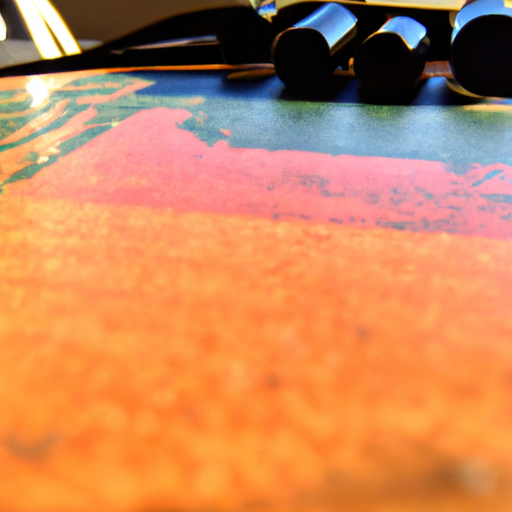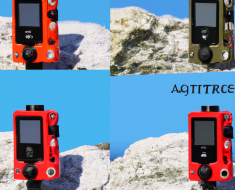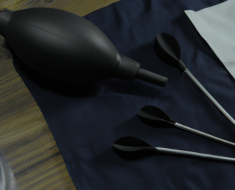“Precision starts with the right optic.”
Benefits of Using a Red Dot Sight
When it comes to choosing the right optic for your firearm, there are a variety of options to consider. One popular choice among shooters is the red dot sight. Red dot sights offer a number of benefits that make them a great option for both beginners and experienced shooters alike.
One of the main advantages of using a red dot sight is the increased accuracy it provides. Unlike traditional iron sights, which require the shooter to align the front and rear sights with the target, a red dot sight allows for quick and easy target acquisition. The red dot serves as a point of reference, making it easier to place shots on target quickly and accurately.
Another benefit of using a red dot sight is the improved speed at which shots can be taken. With a red dot sight, shooters can keep both eyes open while aiming, allowing for better situational awareness and faster target acquisition. This can be especially useful in dynamic shooting situations where quick reaction times are crucial.
Red dot sights are also versatile and can be used on a variety of firearms, including rifles, shotguns, and handguns. This makes them a great option for shooters who own multiple firearms and want a single optic that can be easily transferred between them.
In addition to their accuracy and speed benefits, red dot sights are also easy to use and maintain. Most red dot sights are designed to be user-friendly, with simple controls and adjustments that make it easy to zero the sight and make quick changes in the field. Additionally, red dot sights are typically durable and reliable, making them a great option for shooters who need a dependable optic that can withstand harsh conditions.
One of the key features of red dot sights is their ability to provide a clear and unobstructed view of the target. Unlike magnified optics, which can sometimes obscure the target with crosshairs or reticles, red dot sights offer a simple and uncluttered sight picture that allows shooters to focus on the target without distraction.
Overall, red dot sights offer a number of benefits that make them a great choice for shooters of all skill levels. From increased accuracy and speed to versatility and ease of use, red dot sights provide a number of advantages that can help shooters improve their shooting performance.
In conclusion, when it comes to choosing the right optic for your firearm, a red dot sight is a great option to consider. With their accuracy, speed, versatility, and ease of use, red dot sights offer a number of benefits that can help shooters improve their shooting performance and enjoy their time on the range. Whether you’re a beginner looking to improve your shooting skills or an experienced shooter in need of a reliable optic, a red dot sight is a great choice that can help you take your shooting to the next level.
Factors to Consider When Choosing a Scope
When it comes to choosing the right optic for your firearm, there are several factors to consider to ensure you get the best performance out of your setup. One of the most important decisions you’ll need to make is selecting the right scope for your firearm. With so many options available on the market, it can be overwhelming to know where to start. In this article, we’ll discuss some key factors to consider when choosing a scope for your firearm.
First and foremost, you’ll need to consider the type of shooting you’ll be doing. Are you a long-range shooter looking to make precise shots at extended distances, or are you a hunter who needs a scope that can quickly acquire targets in varying light conditions? Understanding your shooting needs will help narrow down the options and ensure you choose a scope that is best suited for your specific application.
Another important factor to consider is the magnification range of the scope. Magnification refers to how much closer an object appears when viewed through the scope. If you’ll be shooting at long distances, you’ll want a scope with higher magnification to help you see and target your prey more effectively. On the other hand, if you’ll be shooting at closer ranges, a lower magnification scope may be more suitable.
The objective lens size is also an important consideration when choosing a scope. The objective lens is the lens at the front of the scope that gathers light and transmits it to your eye. A larger objective lens allows more light to enter the scope, resulting in a brighter image, especially in low-light conditions. However, larger objective lenses can add weight and bulk to your setup, so it’s essential to find a balance between light transmission and portability.
Reticle choice is another critical factor to consider when selecting a scope for your firearm. The reticle is the crosshair or aiming point inside the scope that helps you align your shot. There are various reticle styles available, including duplex, mil-dot, and BDC reticles, each with its own advantages and disadvantages. Consider your shooting style and preferences when choosing a reticle that will work best for you.
Durability is also an essential factor to consider when choosing a scope for your firearm. You’ll want a scope that can withstand the recoil of your firearm and withstand harsh weather conditions. Look for scopes that are made from high-quality materials and are nitrogen-purged or O-ring sealed to prevent fogging and moisture damage.
Lastly, consider your budget when choosing a scope for your firearm. While it’s tempting to go for the most expensive option, there are plenty of high-quality scopes available at a range of price points. Set a budget and stick to it, ensuring you get the best value for your money without sacrificing quality.
In conclusion, choosing the right optic for your firearm is a crucial decision that can greatly impact your shooting performance. Consider factors such as shooting application, magnification range, objective lens size, reticle choice, durability, and budget when selecting a scope for your firearm. By taking the time to research and evaluate your options, you can find a scope that meets your needs and helps you achieve your shooting goals.
How to Select the Right Magnification for Your Optic

When it comes to choosing the right optic for your firearm, one of the most important factors to consider is the magnification. The magnification of an optic determines how much closer the target will appear when looking through the scope. Selecting the right magnification for your optic can greatly impact your shooting accuracy and overall performance.
One of the first things to consider when selecting the right magnification for your optic is the type of shooting you will be doing. If you are primarily shooting at close range targets, a lower magnification optic, such as a 1-4x or 1-6x scope, may be more suitable. These lower magnification optics provide a wider field of view, making it easier to acquire and track targets quickly.
On the other hand, if you are shooting at longer ranges, a higher magnification optic, such as a 4-16x or 6-24x scope, may be more appropriate. These higher magnification optics allow you to see targets at greater distances with more clarity and precision. However, it is important to keep in mind that higher magnification optics can also make it more difficult to acquire and track moving targets.
Another factor to consider when selecting the right magnification for your optic is the size of the target you will be shooting at. If you are shooting at small targets or targets with fine details, a higher magnification optic may be necessary to clearly see and accurately engage the target. Conversely, if you are shooting at larger targets or targets at closer ranges, a lower magnification optic may be sufficient.
It is also important to consider the environment in which you will be shooting when selecting the right magnification for your optic. If you are shooting in low light conditions or at dawn or dusk, a lower magnification optic with a larger objective lens may be beneficial. This will allow more light to enter the scope, providing a brighter and clearer image of the target.
On the other hand, if you are shooting in bright daylight conditions, a higher magnification optic with a smaller objective lens may be more suitable. This will help reduce glare and provide a clearer image of the target in bright sunlight.
When selecting the right magnification for your optic, it is important to strike a balance between magnification and field of view. A higher magnification optic may provide a clearer image of the target, but it can also limit your field of view, making it more difficult to acquire and track targets quickly. Conversely, a lower magnification optic may provide a wider field of view, but it may sacrifice some clarity and precision at longer ranges.
In conclusion, selecting the right magnification for your optic is a crucial decision that can greatly impact your shooting performance. Consider the type of shooting you will be doing, the size of the target, the environment in which you will be shooting, and the balance between magnification and field of view when choosing the right magnification for your optic. By taking these factors into account, you can ensure that you have the right optic for your firearm to help you achieve greater accuracy and success on the range or in the field.
Comparing Holographic Sights vs. Reflex Sights
When it comes to choosing the right optic for your firearm, there are a variety of options to consider. Two popular choices are holographic sights and reflex sights, each offering unique features and benefits. In this article, we will compare holographic sights vs. reflex sights to help you make an informed decision.
Holographic sights, also known as holographic weapon sights (HWS), use a laser to project a reticle onto a holographic film. This creates a clear and crisp aiming point that is visible in all lighting conditions. Reflex sights, on the other hand, use a LED or laser to project a reticle onto a lens, providing a simple and easy-to-use aiming solution.
One of the main differences between holographic sights and reflex sights is the reticle design. Holographic sights typically offer a more complex reticle with multiple aiming points, allowing for greater precision and accuracy at longer distances. Reflex sights, on the other hand, usually have a simple dot or crosshair reticle, making them ideal for quick target acquisition at close to medium ranges.
Another key difference between holographic sights and reflex sights is the battery life. Holographic sights tend to have a shorter battery life compared to reflex sights, as they require more power to project the reticle onto the holographic film. Reflex sights, on the other hand, have a longer battery life due to their simpler design and lower power consumption.
In terms of durability, holographic sights are generally more robust and rugged compared to reflex sights. Holographic sights are often constructed from high-quality materials such as aluminum or magnesium alloy, making them resistant to shock, recoil, and harsh environmental conditions. Reflex sights, while still durable, may not be as tough as holographic sights due to their simpler construction.
When it comes to price, holographic sights are typically more expensive than reflex sights. This is due to the advanced technology and materials used in holographic sights, as well as the higher manufacturing costs. Reflex sights, on the other hand, are more affordable and offer a cost-effective solution for shooters on a budget.
In terms of performance, both holographic sights and reflex sights offer excellent accuracy and precision. However, holographic sights may have a slight edge in terms of long-range shooting and target identification due to their more complex reticle design. Reflex sights, on the other hand, excel in close to medium-range shooting and fast target acquisition.
Ultimately, the choice between holographic sights and reflex sights comes down to personal preference and intended use. If you prioritize long-range accuracy and target identification, a holographic sight may be the best option for you. If you value quick target acquisition and affordability, a reflex sight may be more suitable.
In conclusion, both holographic sights and reflex sights have their own unique advantages and disadvantages. By understanding the differences between the two types of optics, you can make an informed decision and choose the right optic for your firearm. Whether you opt for a holographic sight or a reflex sight, you can rest assured knowing that you have a reliable and effective aiming solution for your shooting needs.
Importance of Properly Mounting Your Optic on Your Firearm
When it comes to shooting accurately with your firearm, having the right optic can make all the difference. Whether you are a seasoned hunter, competitive shooter, or just enjoy hitting the range for some target practice, choosing the right optic for your firearm is crucial. However, it’s not just about selecting the right optic – properly mounting it on your firearm is equally important.
One of the key reasons why properly mounting your optic is essential is to ensure that it stays securely in place while you are shooting. A loose or improperly mounted optic can shift or move during recoil, causing your shots to be off target. This can be frustrating and can also lead to missed opportunities in the field or on the range.
To avoid this issue, it is important to follow the manufacturer’s instructions for mounting your optic. This typically involves using the correct mounting hardware, such as rings or bases, and ensuring that they are tightened to the proper torque specifications. It is also a good idea to periodically check the mounting hardware to make sure that it has not come loose over time.
Another reason why properly mounting your optic is important is to ensure that it is properly aligned with your firearm. If your optic is not aligned correctly, you may experience issues such as parallax error, where the reticle appears to move when you shift your head position. This can make it difficult to shoot accurately and consistently.
To avoid parallax error, it is important to mount your optic so that it is aligned with the bore of your firearm. This can typically be achieved by using a scope level or other alignment tools to ensure that the optic is positioned correctly. Taking the time to properly align your optic can make a big difference in your shooting accuracy.
Properly mounting your optic can also help to protect it from damage. Optics are precision instruments that are designed to withstand the rigors of shooting, but they can still be damaged if they are not mounted securely. A loose optic can be knocked out of alignment or even fall off your firearm, potentially causing irreparable damage.
To protect your optic from damage, it is important to make sure that it is securely mounted to your firearm. This can help to absorb some of the recoil forces generated when you shoot, reducing the stress on the optic. Additionally, using high-quality mounting hardware can help to ensure that your optic stays in place, even under heavy use.
In conclusion, properly mounting your optic on your firearm is essential for ensuring that you can shoot accurately and consistently. By following the manufacturer’s instructions, aligning your optic correctly, and using high-quality mounting hardware, you can help to ensure that your optic stays securely in place while you shoot. Taking the time to properly mount your optic can make a big difference in your shooting performance and can help you get the most out of your firearm.





